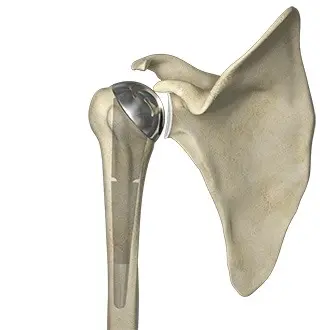
Shoulder Replacement Surgery
Types of Shoulder Replacements

Also called a hemiarthroplasty, is a surgical procedure in which only part of the shoulder joint is replaced. It is typically done when only the ball of the shoulder joint is damaged, while the socket remains intact and healthy.
A partial shoulder replacement is often recommended for:
Severe fractures of the humeral head (common in older adults), Osteoarthritis or rheumatoid arthritis affecting only the humeral head, Avascular necrosis (loss of blood supply to the humeral head) and Previous failed shoulder surgery.
Also called reverse total shoulder arthroplasty is a surgical procedure used to treat severe shoulder arthritis, massive rotator cuff tears, or complex fractures. It’s called “reverse” because it switches the ball-and-socket anatomy of the shoulder. In a normal shoulder, the ball is at the top of the arm bone, and the socket is part of the shoulder blade. In a reverse shoulder replacement, the ball is attached to the shoulder blade, and the socket is placed on top of the arm bone.
